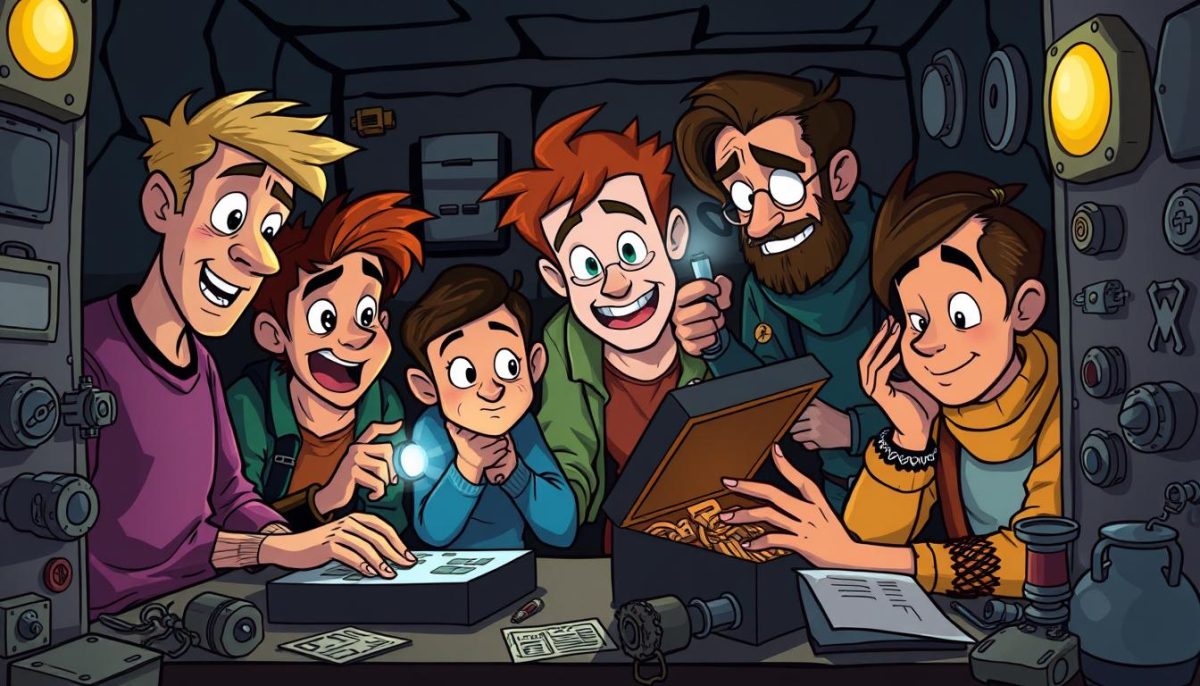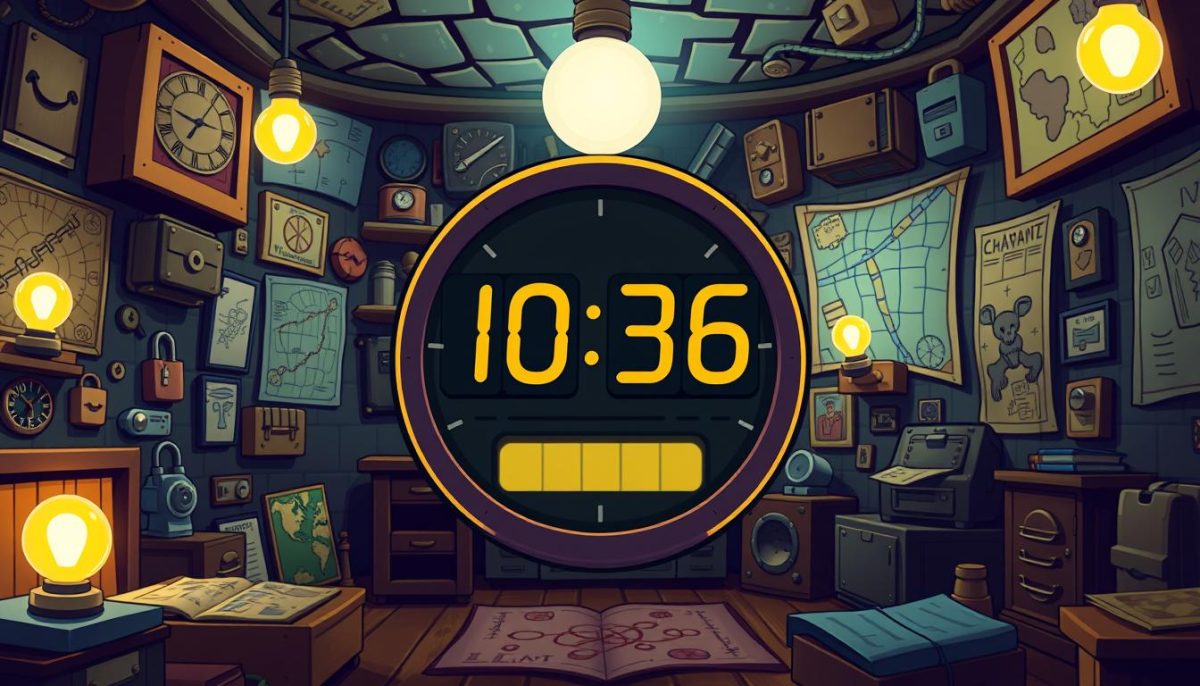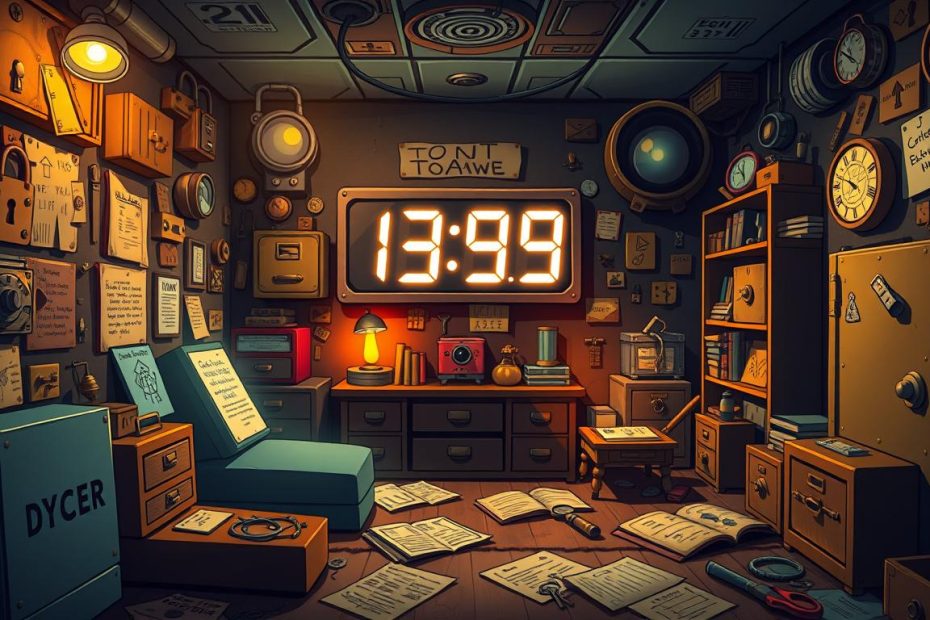Escape rooms have taken the recreational world by storm, offering an electrifying combination of puzzles, adrenaline, and teamwork in escape rooms. As we step into the thrilling ambiance of these immersive experiences, it’s crucial to understand that our success hinges on effective preparation and strategic thinking. The excitement of racing against the clock not only appeals to our sense of adventure but also showcases the necessity of mastering the right escape room strategies. Through careful collaboration and clear communication, we can harness winning escape room techniques that transform our approach from mere participation to triumphant completion.
As we delve deeper into this article, we’ll explore successful escape room tips that highlight the importance of teamwork and shared responsibilities. Recent industry insights reveal a significant rise in escape room popularity, making it evident that forging connections and nurturing critical thinking skills are essential elements for achieving victory. Let’s embark on this journey together, enhancing our experience and ensuring every minute counts!
Understanding the Escape Room Experience
The escape room experience offers a unique blend of thrill and teamwork, captivating participants with immersive adventures. Different themes and storylines create a remarkable atmosphere, allowing us to choose from horror, mystery, or adventure. The excitement often stems from the various challenges presented, each designed to foster problem-solving and collaboration within our group. Engaging environments elevate the experience, transforming simple puzzles into exhilarating quests. Many escape room enthusiasts embrace the thrill of escape rooms, with statistics revealing that participants often leave feeling accomplished and eager to return.
The Thrill of the Challenge
One of the key elements contributing to the thrill of escape rooms is the intricate design of challenges. Factors such as diverse narrative arcs and carefully crafted puzzles engage participants from the moment they enter. Each room draws us into its storyline, prompting us to think creatively and work together. Notable examples include rooms that utilize technology to enhance interactivity, creating a fully immersive environment. These essential features of escape rooms not only provide entertainment but also encourage bonding among friends and family.
What Makes an Escape Room Successful
A successful escape room design integrates high-quality puzzles, compelling narratives, and captivating environmental design. Each of these elements plays a critical role in creating an unforgettable experience. We recognize that striking the right balance between challenge and accessibility is vital for participant enjoyment. By catering to varying skill levels, escape room success factors become evident, as rooms that engage everyone lead to greater satisfaction. Expert opinions emphasize that well-constructed rooms foster repeat visits, creating loyal patrons eager for their next adventure. Many renowned escape room businesses exemplify this approach, showcasing customer reviews that highlight their success.
| Escape Room Component | Importance | Examples |
|---|---|---|
| Puzzles | Engages participants and promotes teamwork | Logic puzzles, physical challenges |
| Narrative | Enhances immersion and emotional connection | Mystery plots, horror stories |
| Environmental Design | Creates an engaging and believable setting | Themed decor, sound effects |
| Accessibility | Ensures everyone can participate | Varied difficulty levels |
Effective Communication Among Team Members
In an escape room, effective communication plays a crucial role in our collective performance. By establishing clear roles in escape rooms, we can enhance our escape room teamwork, making the experience more coordinated and enjoyable. Different strengths among participants create opportunities for specialization, leading to improved outcomes during gameplay.
The Importance of Clear Roles
Defining clear roles within our team forms the backbone of effective communication in games. When each member knows their responsibilities, we foster escape room cohesiveness. For instance, we might assign the following roles:
- Clue Master: Focuses on gathering and interpreting clues.
- Navigator: Keeps track of room layout and puzzle locations.
- Puzzle Solver: Engages directly with clues to solve riddles.
- Communicator: Shares findings with the group to ensure everyone stays aligned in puzzles.
By optimizing our abilities in this manner, we can minimize confusion and maximize our chances of escaping. Experts suggest that teams with well-defined roles often perform significantly better than those without.
Strategies for Staying on the Same Page
Maintaining effective communication throughout the escape room experience is vital. Employing team communication strategies, such as designated codes or signals, allows us to relay information quickly. For instance, we can use hand signals to indicate when we discover something valuable or need assistance without disrupting others. Verbalizing our thought processes while working on puzzles encourages participation from all members, leading to richer discussions and collaborative solutions.

Real-life scenarios exemplify the impact of these strategies. Teams that prioritize open dialogue and constant updates tend to escape successfully far more often. In summary, clear roles and effective communication within teams transform the escape room experience, keeping our efforts aligned and boosting our problem-solving capabilities.
Escape Room Strategies for Time Management
Effective escape room time management can make all the difference in our quest for success. Establishing a group pace early on sets the tone for the experience. We must gauge how quickly to approach puzzles based on their complexity and the remaining time. Balancing speed and accuracy becomes essential as we navigate the countdown in escape rooms.
Setting a Group Pace
Creating a consistent pacing in escape rooms requires teamwork. A few effective time strategies include:
- Assessing the difficulty of puzzles together.
- Delegating specific tasks based on team strengths.
- Setting milestone goals to check our progress.
These approaches to pacing in escape rooms can help us stay aligned and engaged, improving our chances of maximizing success within the time constraints.
Using a Timer Effectively
Using escape room timers allows us to maintain a sense of urgency. Regularly checking the clock helps us balance anxiety without overwhelming ourselves. Implementing milestone checks at specific time intervals serves as a motivating strategy. Research shows that the psychological impact of countdowns can enhance performance, making our time management skills even more vital.
| Interval | Action | Purpose |
|---|---|---|
| First 10 mins | Assess most complex puzzles | Focus efforts on high-reward areas |
| Midway (30 mins) | Evaluate progress | Realign strategies if needed |
| Last 10 mins | Prioritize remaining challenges | Maximize efficiency |
Recognizing When to Move On
Knowing when to move on in escape rooms is a crucial skill. We should watch for signs of stagnation, such as prolonged silence or mounting frustration from team members. Embracing adaptive thinking allows us to pivot and focus on other puzzles effectively. Expert tips suggest that abandoning a stuck puzzle for another can revitalize our problem-solving efforts, aiding in overall success during the time-limited challenge.

Maximizing Your Escape with Critical Thinking
When we embark on the adventure of an escape room, the key to our success often lies in our critical thinking skills for escape rooms. Approaching challenges methodically and applying logical reasoning in puzzles can significantly streamline our problem-solving approaches. Instead of feeling overwhelmed, we can enhance our escape room performance by breaking down each puzzle into smaller, more manageable parts. This strategy allows us to tackle each element systematically, ensuring no detail goes unnoticed.
One effective method is to approach problems from different angles. By encouraging divergent thinking within our team, we can explore various solutions that may have otherwise been overlooked. High-performing teams often exemplify this practice, demonstrating that the collective cognitive resources we possess can lead to more innovative outcomes. Such collaboration fosters an environment where critical insights emerge, guiding us towards the final key or clue.
Ultimately, the habits we cultivate in the pressure cooker of an escape room can translate into our daily lives. The development of critical thinking not only enhances our escape room performance but also equips us with robust problem-solving capabilities. By refining our logical reasoning skills, we prepare ourselves for unforeseen challenges outside of the escape room, ensuring we emerge not just as winners in the game, but as more capable individuals in everyday situations.
